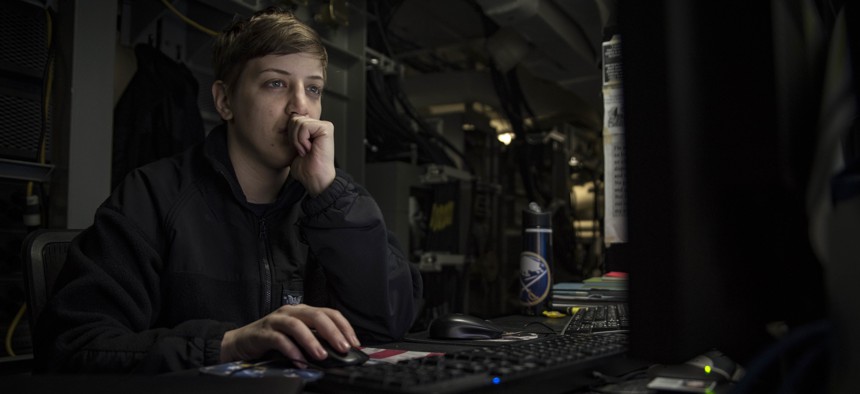
The National Security Agency said in 2015 that historically, it disclosed 91 percent of vulnerabilities to manufacturers and that a portion of the remaining 9 percent were discovered by manufacturers. U.S. Navy, Seaman Joshua Murray
How Many Zero-Days Does the US Government Hold? Here’s the Best Guess Yet
A Columbia University report critiques the process that decides whether cyber vulnerabilities should be fixed or exploited
The U.S. government likely retains an arsenal of just dozens of otherwise unknown computer vulnerabilities that can be used for spying or sabotage and adds fewer than 10 new vulnerabilities to that cache each year, according to a Columbia University analysis released today.
The analysis gives some context to the government’s largely opaque decision-making about whether to disclose exploitable glitches it discovers in commercial and industrial computer systems or to use them for intelligence operations.
Such previously unknown vulnerabilities have been at the root of numerous high-profile cyber operations, including the Stuxnet attack that seriously damaged Iranian nuclear reactors.
It comes as a group called the Shadow Brokers is releasing a trove of leaked National Security Agency hacking tools that includes a handful of the nonpublic vulnerabilities known as zero days—because they’re not known to the manufacturer, which has had zero days to offer a patch.
Titled “The U.S. Government and Zero-Day Vulnerabilities,” the report is based on six months of research by Jason Healey, senior research scholar at Columbia University’s School of International and Public Affairs, and a class of graduate students. Healey, who is a former director of infrastructure protection at the White House and has held numerous cyber defense positions in government and industry, previewed some of the report’s findings at the Black Hat cybersecurity conference in Las Vegas in August.
Government agencies currently submit zero days they discover to an interagency Vulnerability Equities Process headed by the National Security Council. The review examines questions such as how likely criminals and foreign adversaries are to discover the vulnerability and how much damage they could do if they did discover it, balancing that with what value the vulnerability might provide to U.S. intelligence agencies.
The review process launched in 2010 with NSA taking the lead. That responsibility was shifted to NSC in the wake of the former contractor Edward Snowden's revelations in 2014 with a goal of giving a stronger voice to the Department of Homeland Security and other agencies more focused on cyber defense than offense.
The review process only applies to products made or widely used in the United States.
The government has been tight-lipped about how many vulnerabilities go through this review, though NSA said in 2015 that historically, it disclosed 91 percent of vulnerabilities to manufacturers and that a portion of the remaining 9 percent were discovered by manufacturers before the government completed its review.
The best takeaway from the Columbia report, according to the authors, is that the equities review process is not “hopelessly broken,” but “does appear to be in need of further strengthening.”
The authors recommend increasing transparency about reviews through annual or quarterly reports and formalizing the review process by executive order. They also recommend instituting annual or biennial re-examinations for zero days the government opted not to disclose but that still haven’t been discovered—in case they've become less valuable to U.S. intelligence agencies or it's become more likely adversaries will use them against U.S. targets.
Agencies should also be barred from exploiting vulnerabilities before equity reviews are completed “to prevent agencies from bureaucratically delaying the process while they squeeze the orange dry,” the report states.
The report also criticizes the FBI’s decision to contract with an undisclosed firm to unlock the iPhone used by San Bernardino shooter Syed Farook.
The FBI reportedly paid the firm in the neighborhood of $1 million to unlock the phone, but the firm did not sell the vulnerability that made the unlocking possible to the bureau. The authors recommend closing that loophole, “so agencies cannot bypass the [review process] because of a nondisclosure agreement or other chicanery.”
The report also recommends including industry perspectives in the review process in some way, perhaps by including members who are retired from both government and industry but retain government clearances.




